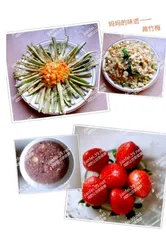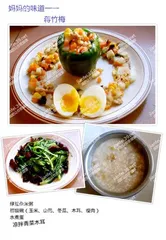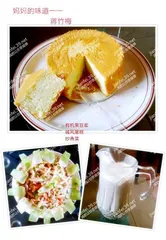What to eat for breakfast 38 simple and easy-to-make nutritious breakfast recipes
What is a nutritious breakfast recipe
The criteria for a good breakfast are:
Rich carbohydrates + dietary fiber + protein
Less salt + less oil + less sugar
Breakfast is very important to the human body, high-quality breakfast can make people energetic all day, active thinking, work and study efficiency, memory enhancement. Do not eat breakfast or eat too little, will make people have no spirit, slow thinking, memory decline, and even produce hypoglycemia. Breakfast should be based on cereals, supplemented by eggs and milk. Adequate nutrients in grains can release a lot of carbohydrates to provide the calories needed for the morning, so that learning and work efficiency doubled. From a health perspective, it is recommended to adhere to the principle of less salt, less sugar and less oil, and mainly cook food.
For carbohydrates, preference should be given to coarse grain foods such as oats, barley, brown rice, beans, and rye. They are rich in soluble and insoluble fiber, and foods rich in soluble fiber help lower cholesterol levels in the blood, thereby reducing the risk of heart disease. Another benefit is that it slows down the body's absorption of glucose. Soluble fiber can bind to cholesterol and carry it out of the body, reducing the risk of heart disease and arterial disease.
Choose eggs, soy milk, milk, etc. For protein, you can eat a small amount of nuts if possible.
Add another fruit and some fresh vegetables to supplement your vitamins.
38 nutritious breakfast recipes recommended by dietitian:
Introduction to the nutritionist:
Jiang Zhumei is a national third-level public dietitian and a 39 specially invited dietitian for weight loss. She has served as a part-time weight loss consultant and nutrition and health consultant in many fitness clubs.
A delicious and nutritious breakfast is full of love. Imagine that your loved family can enjoy a delicious and nutritious breakfast early in the morning and start a happy day. Then you will no longer be sloppy about breakfast. Come and make breakfast with me!
Nutritional Breakfast Recipe 1:

Grain porridge, fried rice noodle, steamed eggplant and carrot, strawberry.
I like to use steamed eggplant, which has less oil and nutrients. It is very suitable for people who lose weight. If you like to eat eggplant and are afraid of frying and eating it will be oily, why not try this method
Nutritional breakfast food 2:

mung bean porridge, sweet pepper bowl (corn, yam, wax gourd, lean meat), boiled eggs, cold vegetables and fungus.
Many weight loss friends always feel that breakfast can be handled casually, and they also feel that breakfast cannot be eaten. These are all misunderstandings. Breakfast is a very important meal, accounting for 40% of the whole day's energy. Not eating breakfast is not conducive to weight management.
Nutritional Breakfast Recipe 3:

Organic black soy milk, Qifeng cake, fried vegetables. Eating sweets for breakfast can make your mood more pleasant. Even when you are losing weight, it's okay to occasionally have sweets to reward yourself.